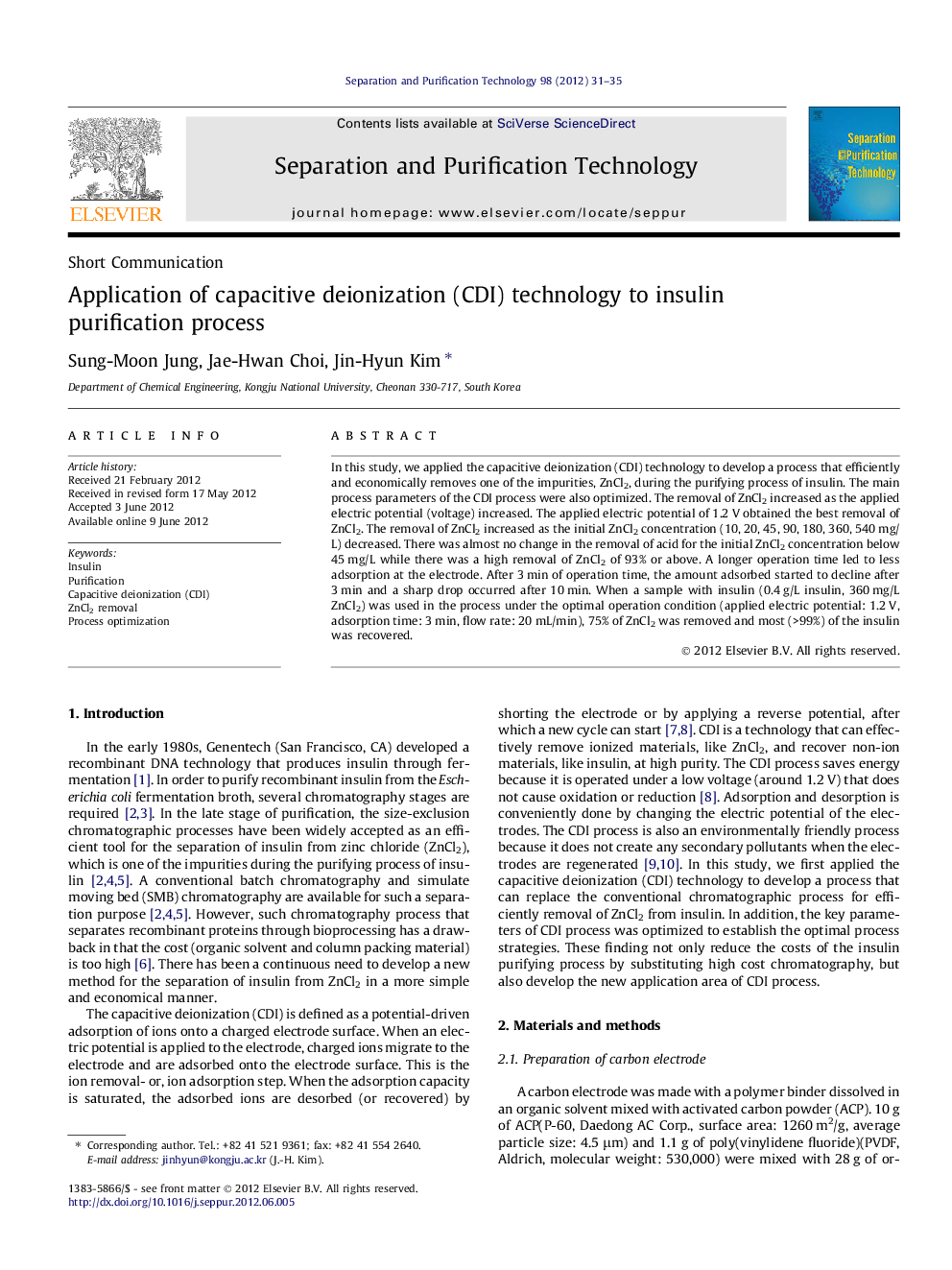| Article ID | Journal | Published Year | Pages | File Type |
|---|---|---|---|---|
| 642000 | Separation and Purification Technology | 2012 | 5 Pages |
In this study, we applied the capacitive deionization (CDI) technology to develop a process that efficiently and economically removes one of the impurities, ZnCl2, during the purifying process of insulin. The main process parameters of the CDI process were also optimized. The removal of ZnCl2 increased as the applied electric potential (voltage) increased. The applied electric potential of 1.2 V obtained the best removal of ZnCl2. The removal of ZnCl2 increased as the initial ZnCl2 concentration (10, 20, 45, 90, 180, 360, 540 mg/L) decreased. There was almost no change in the removal of acid for the initial ZnCl2 concentration below 45 mg/L while there was a high removal of ZnCl2 of 93% or above. A longer operation time led to less adsorption at the electrode. After 3 min of operation time, the amount adsorbed started to decline after 3 min and a sharp drop occurred after 10 min. When a sample with insulin (0.4 g/L insulin, 360 mg/L ZnCl2) was used in the process under the optimal operation condition (applied electric potential: 1.2 V, adsorption time: 3 min, flow rate: 20 mL/min), 75% of ZnCl2 was removed and most (>99%) of the insulin was recovered.
► The capacitive deionization (CDI) process was applied to purify insulin. ► The main process parameters of the CDI process were optimized. ► 75% of ZnCl2 was removed. ► The most (>99%) of the insulin was recovered.
